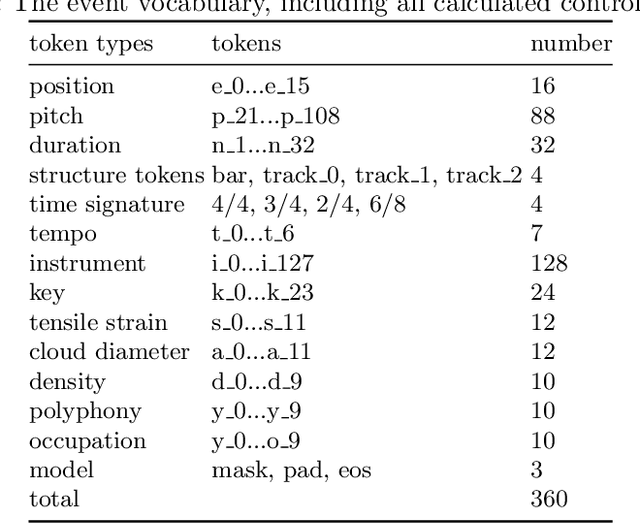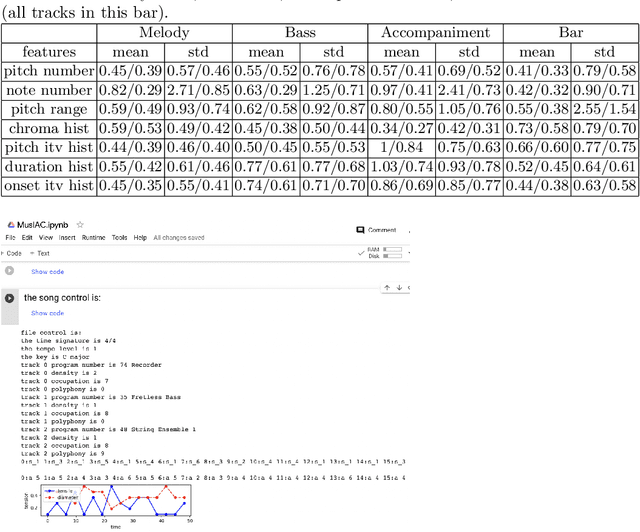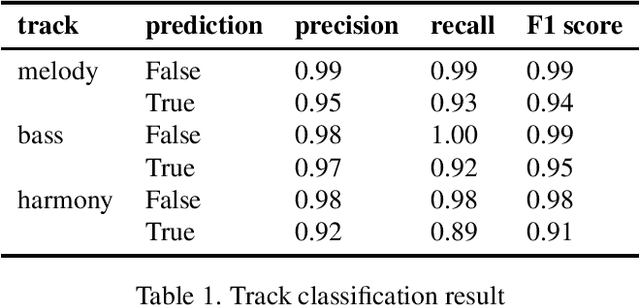Thor Magnusson
Notochord: a Flexible Probabilistic Model for Real-Time MIDI Performance
Mar 18, 2024



Abstract:Deep learning-based probabilistic models of musical data are producing increasingly realistic results and promise to enter creative workflows of many kinds. Yet they have been little-studied in a performance setting, where the results of user actions typically ought to feel instantaneous. To enable such study, we designed Notochord, a deep probabilistic model for sequences of structured events, and trained an instance of it on the Lakh MIDI dataset. Our probabilistic formulation allows interpretable interventions at a sub-event level, which enables one model to act as a backbone for diverse interactive musical functions including steerable generation, harmonization, machine improvisation, and likelihood-based interfaces. Notochord can generate polyphonic and multi-track MIDI, and respond to inputs with latency below ten milliseconds. Training code, model checkpoints and interactive examples are provided as open source software.
MusIAC: An extensible generative framework for Music Infilling Applications with multi-level Control
Feb 11, 2022



Abstract:We present a novel music generation framework for music infilling, with a user friendly interface. Infilling refers to the task of generating musical sections given the surrounding multi-track music. The proposed transformer-based framework is extensible for new control tokens as the added music control tokens such as tonal tension per bar and track polyphony level in this work. We explore the effects of including several musically meaningful control tokens, and evaluate the results using objective metrics related to pitch and rhythm. Our results demonstrate that adding additional control tokens helps to generate music with stronger stylistic similarities to the original music. It also provides the user with more control to change properties like the music texture and tonal tension in each bar compared to previous research which only provided control for track density. We present the model in a Google Colab notebook to enable interactive generation.
Midi Miner -- A Python library for tonal tension and track classification
Oct 03, 2019

Abstract:We present a Python library, called Midi Miner, that can calculate tonal tension and classify different tracks. MIDI (Music Instrument Digital Interface) is a hardware and software standard for communicating musical events between digital music devices. It is often used for tasks such as music representation, communication between devices, and even music generation [5]. Tension is an essential element of the music listening experience, which can come from a number of musical features including timbre, loudness and harmony [3]. Midi Miner provides a Python implementation for the tonal tension model based on the spiral array [1] as presented by Herremans and Chew [4]. Midi Miner also performs key estimation and includes a track classifier that can disentangle melody, bass, and harmony tracks. Even though tracks are often separated in MIDI files, the musical function of each track is not always clear. The track classifier keeps the identified tracks and discards messy tracks, which can enable further analysis and training tasks.
 Add to Chrome
Add to Chrome Add to Firefox
Add to Firefox Add to Edge
Add to Edge